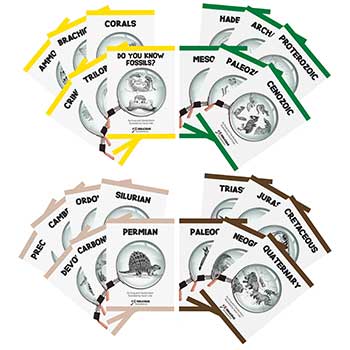Sign up for Lesson Plans, discounts & more!
Brachiopod Classification

Historically brachiopods have been divided into two classes: Articulata and Inarticulata. This is in reference to how the two shells are joined. In the Articulata a hinge joins the shells together with teeth that fit into sockets. The Inarticulata have a complex of muscles to hold the shells together. Pictured at right is an inarticulate brachiopod.
More recently there is argument over whether this is the best system with which to classify brachiopods. Consensus has yet to be reached and these classes are still commonly seen in reference works.
There are 3 orders of brachiopods in existence today. They are:
The Lingulata
The Rhynchonellida
The Terebratulida.
Together they account for about 300 species. However, they are seldom seen. The living members of these orders make their homes in very cold waters either near the poles or in very deep ocean waters.
Some Details
• The Lingulata is the oldest order with their beginnings in the Cambrian Period. The Lingulata has changed little or not at all during the past 550 million years. It has a very long pedicle which it uses for burrowing into the sediments of the ocean floor. Normally just the edges of the shell are clear of the sand. The name comes from the Latin word for tongue because of the shape of the shell.

• The order Rhynchonellida first show in the fossil record during the Ordovician Period. During the Mesozoic Era They were the most plentiful of the phylum. Today there are just a few species surviving. At left is a Rhynchonellida brachiopod.
• The Terebratulida don’t make
their first appearance until the Carboniferous Period. These are the
babies of the group a mere 350 million years old. Today this is the most
abundant of the brachiopods.
The Extinct Orders
• Oblellida-was present and became extinct during the Cambrian Period.
• Strophomenida-first
shows in the fossil record in the early Ordovician Period. This group
was the largest of the brachiopods with over 400 genera. They made it
through the Great Permian extinction and became extinct at the end of
the Triassic.
• Orthida-had its beginnings in the Cambrian Period and was a victim of the Permian extinction.
• Pentamerida-fossils have been found from the late Cambrian to the end of the Devonian Period.
• Spiriferida-are
present in the mid Ordovician, were most diverse during the Devonian
Period, and died out in the early Jurassic Period. This order is easy to
recognize by the very long hinge line. This is usually the widest part
of the shell. The mid-line of the valve has a depression running along
it (sulcus).
Find out more about the brachiopod.
Check out some of the Educational Materials for sale on our sister site fossilicious.com.

interested in more? If so, you may want to check out our other sites:
fossilicious.com - Our online fossil and mineral rock shop.
rocksandminerals4u.com - An educational site about rocks, minerals, and geology.
Geologic Time Geologic Time Line
Cenozoic Era
Quaternary
Neogene
Paleogene
Mesozoic Era
Cretaceous
Jurassic
Triassic
Paleozoic Era
Permian
Carboniferous
Devonian
Silurian
Ordovician
Cambrian
Archean Time
Hadean Time
Teachers Resources
Activities for Education and Fun
Earth Science Lesson Plans
Activities For Kids
Fossil Lesson Plans
Fossil Activities
Education Articles
Coloring Pages
Dinosaur Coloring Pages
Montessori Materials
Geology Club
Fossil Hunting
 |
 |
 |




